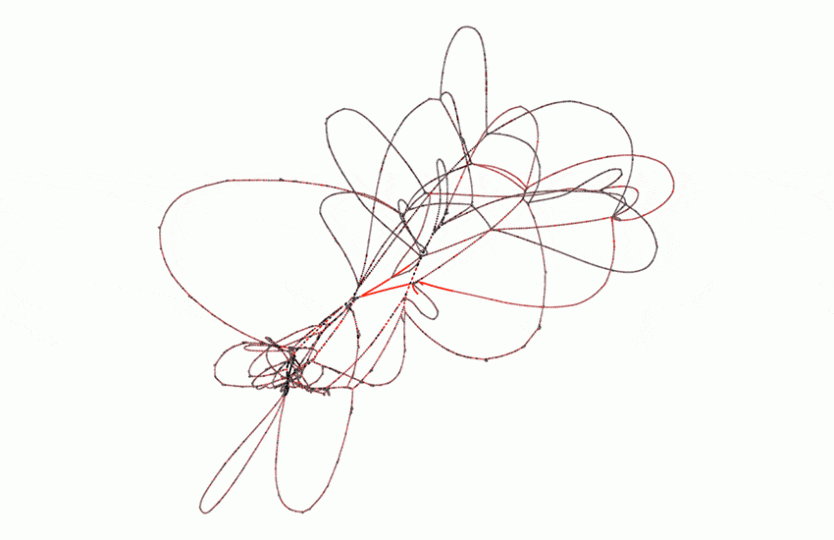By Carl Zimmer
When Benedict Paten stares at his computer monitor, he sometimes gazes at what looks like a map of the worst subway system in the world. The screen is sprinkled with little circles that look like stations. Some are joined by straight lines — sometimes a single path from one circle to the next, sometimes a burst of spokes radiating out in many directions. And sometimes the lines bend into sweeping curves that soar off on express routes to distant stations.
A rainbow palette of colors makes it a little easier to digest the complexity. But if you stare a little too long, vertigo sets in.
This map is not a guide to any city on Earth. It is a sketch of the human gene pool.
Sixteen years ago, two teams of scientists announced they had assembled the first rough draft of the entire human genome. If you wanted, you could read the whole thing — 3.2 billion units, known as base pairs.
Today, hundreds of thousands of people have had their genomes sequenced, and millions more will be completed in the next few years.
But as the numbers skyrocket, it’s becoming painfully clear that the original method that scientists used to compare genomes to each other — and to develop a better understanding of how our DNA influences our lives — is rapidly becoming obsolete. When scientists sequence a new genome, their reconstructions are far from perfect. And those imperfections sometimes cause geneticists to miss a mutation known to cause a disease. They can also make it harder for scientists to discover new links between genes and diseases.
The full article at STAT.
When Benedict Paten stares at his computer monitor, he sometimes gazes at what looks like a map of the worst subway system in the world. The screen is sprinkled with little circles that look like stations. Some are joined by straight lines — sometimes a single path from one circle to the next, sometimes a burst of spokes radiating out in many directions. And sometimes the lines bend into sweeping curves that soar off on express routes to distant stations.
A rainbow palette of colors makes it a little easier to digest the complexity. But if you stare a little too long, vertigo sets in.
This map is not a guide to any city on Earth. It is a sketch of the human gene pool.
Sixteen years ago, two teams of scientists announced they had assembled the first rough draft of the entire human genome. If you wanted, you could read the whole thing — 3.2 billion units, known as base pairs.
Today, hundreds of thousands of people have had their genomes sequenced, and millions more will be completed in the next few years.
But as the numbers skyrocket, it’s becoming painfully clear that the original method that scientists used to compare genomes to each other — and to develop a better understanding of how our DNA influences our lives — is rapidly becoming obsolete. When scientists sequence a new genome, their reconstructions are far from perfect. And those imperfections sometimes cause geneticists to miss a mutation known to cause a disease. They can also make it harder for scientists to discover new links between genes and diseases.
The full article at STAT.


Recent Comments